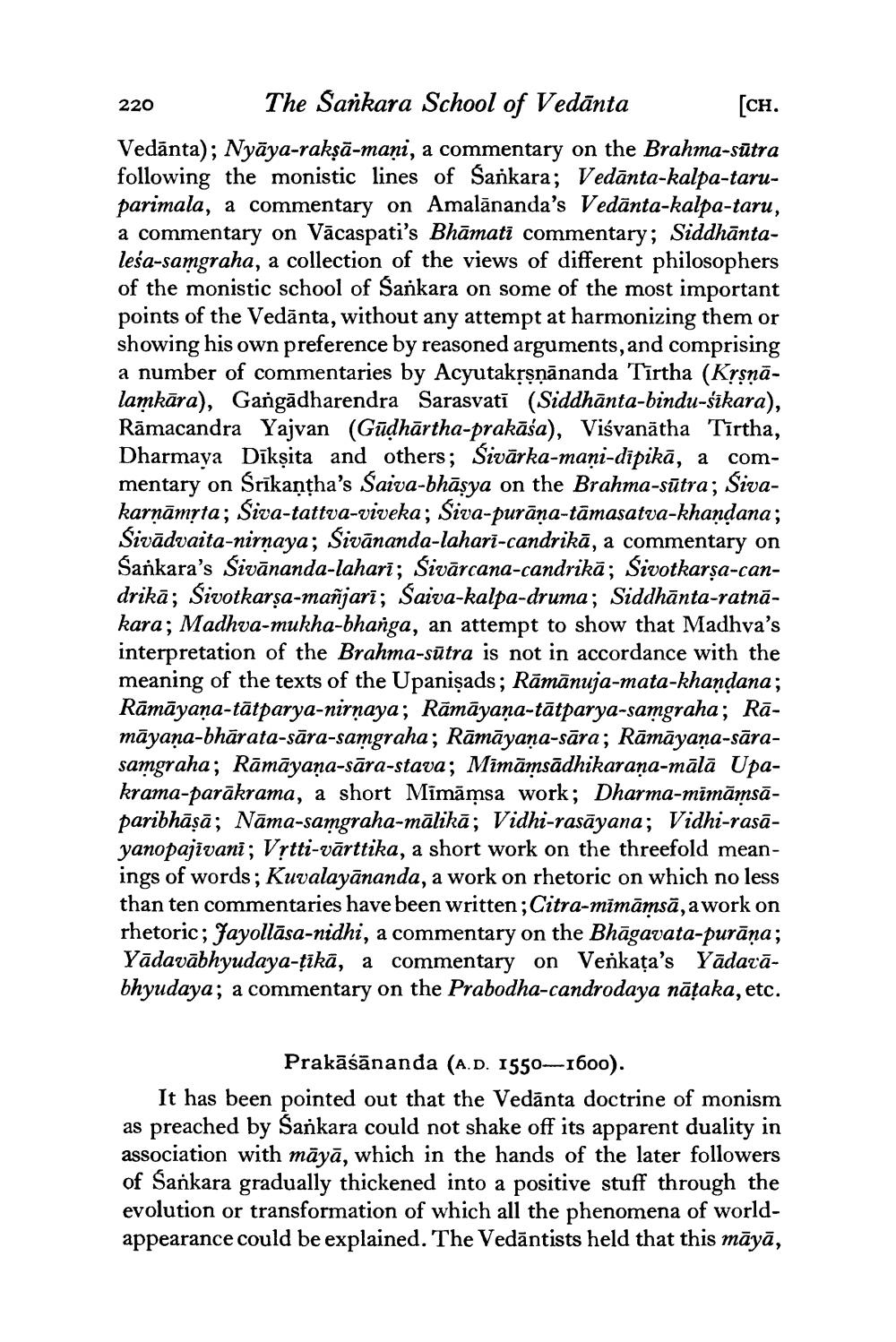________________
The Sankara School of Vedanta
Vedānta); Nyāya-rakṣā-maṇi, a commentary on the Brahma-sutra following the monistic lines of Sankara; Vedanta-kalpa-taruparimala, a commentary on Amalānanda's Vedānta-kalpa-taru, a commentary on Vacaspati's Bhāmati commentary; Siddhāntalesa-samgraha, a collection of the views of different philosophers of the monistic school of Sankara on some of the most important points of the Vedanta, without any attempt at harmonizing them or showing his own preference by reasoned arguments, and comprising a number of commentaries by Acyutakṛṣṇānanda Tīrtha (Kṛṣṇālamkāra), Gangadharendra Sarasvati (Siddhānta-bindu-śīkara), Rāmacandra Yajvan (Guḍhārtha-prakāśa), Viśvanatha Tīrtha, Dharmaya Dikṣita and others; Šivārka-maņi-dipikā, a commentary on Srikantha's Saiva-bhasya on the Brahma-sūtra; Sivakarnāmṛta; Śiva-tattva-viveka; Šiva-purāṇa-tāmasatva-khandana; Sivadvaita-nirnaya; Sivananda-lahari-candrikā, a commentary on Sankara's Sivananda-lahari; Śivarcana-candrika; Sivotkarṣa-candrikā; Sivotkarṣa-mañjarī; Saiva-kalpa-druma; Siddhānta-ratnākara; Madhva-mukha-bhanga, an attempt to show that Madhva's interpretation of the Brahma-sutra is not in accordance with the meaning of the texts of the Upanisads; Rāmānuja-mata-khandana; Rāmāyaṇa-tātparya-nirṇaya; Rāmāyaṇa-tātparya-samgraha; Rāmāyaṇa-bhārata-sāra-samgraha; Rāmāyaṇa-sāra; Rāmāyaṇa-sārasamgraha; Rāmāyaṇa-sāra-stava; Mīmāmsādhikaraṇa-mālā Upakrama-parākrama, a short Mīmāmsa work; Dharma-mīmāmsāparibhāṣā; Nāma-samgraha-mālikā; Vidhi-rasāyana; Vidhi-rasāyanopajivani; Vṛtti-vārttika, a short work on the threefold meanings of words; Kuvalayananda, a work on rhetoric on which no less than ten commentaries have been written; Citra-mimāmsă, a work on rhetoric; Jayollasa-nidhi, a commentary on the Bhāgavata-purāṇa; Yadavābhyudaya-ṭīkā, a commentary on Venkata's Yādavābhyudaya; a commentary on the Prabodha-candrodaya nāṭaka, etc.
220
[CH.
Prakāśānanda (A.D. 1550-1600).
It has been pointed out that the Vedanta doctrine of monism as preached by Sankara could not shake off its apparent duality in association with māyā, which in the hands of the later followers of Sankara gradually thickened into a positive stuff through the evolution or transformation of which all the phenomena of worldappearance could be explained. The Vedantists held that this māyā,




